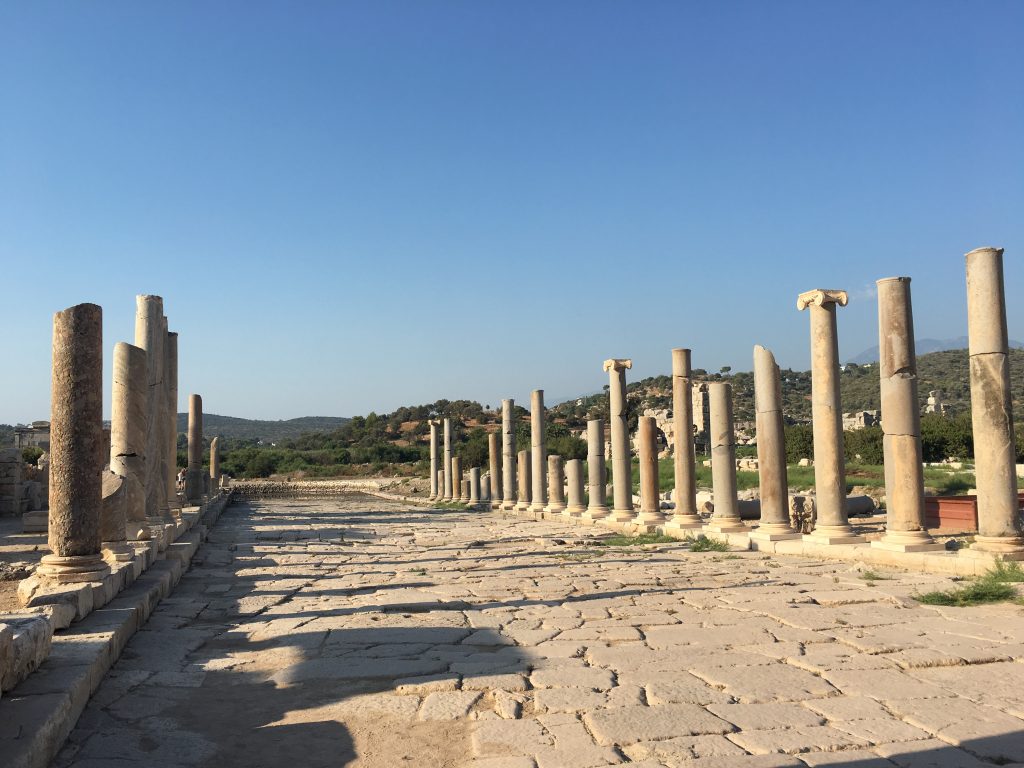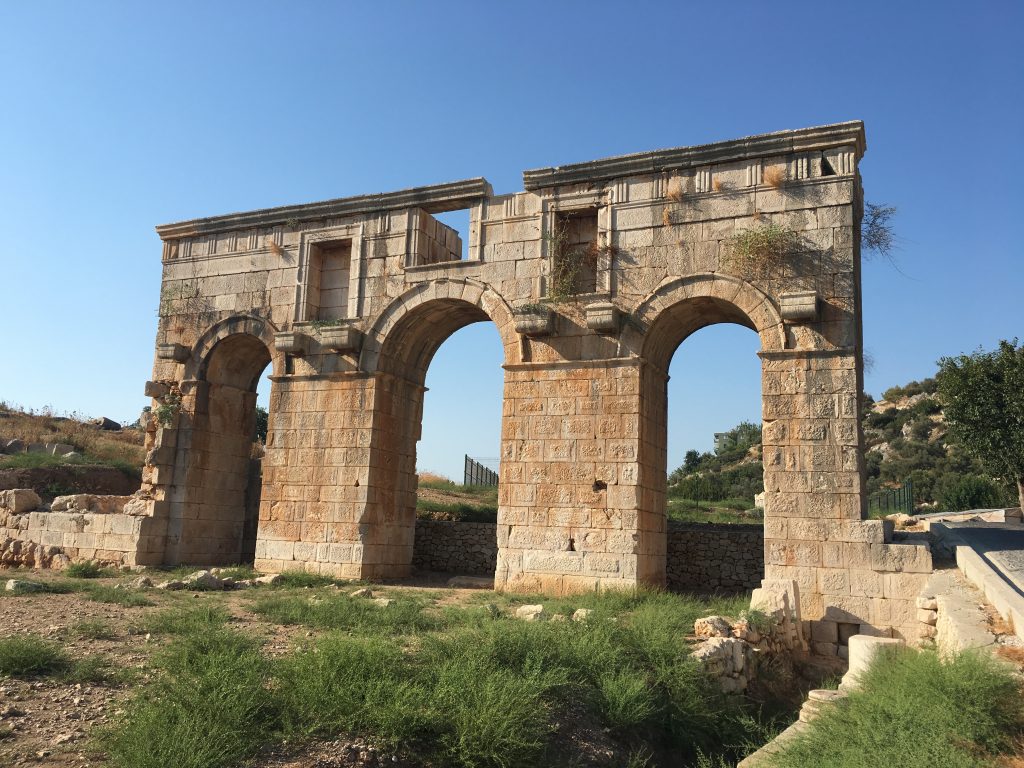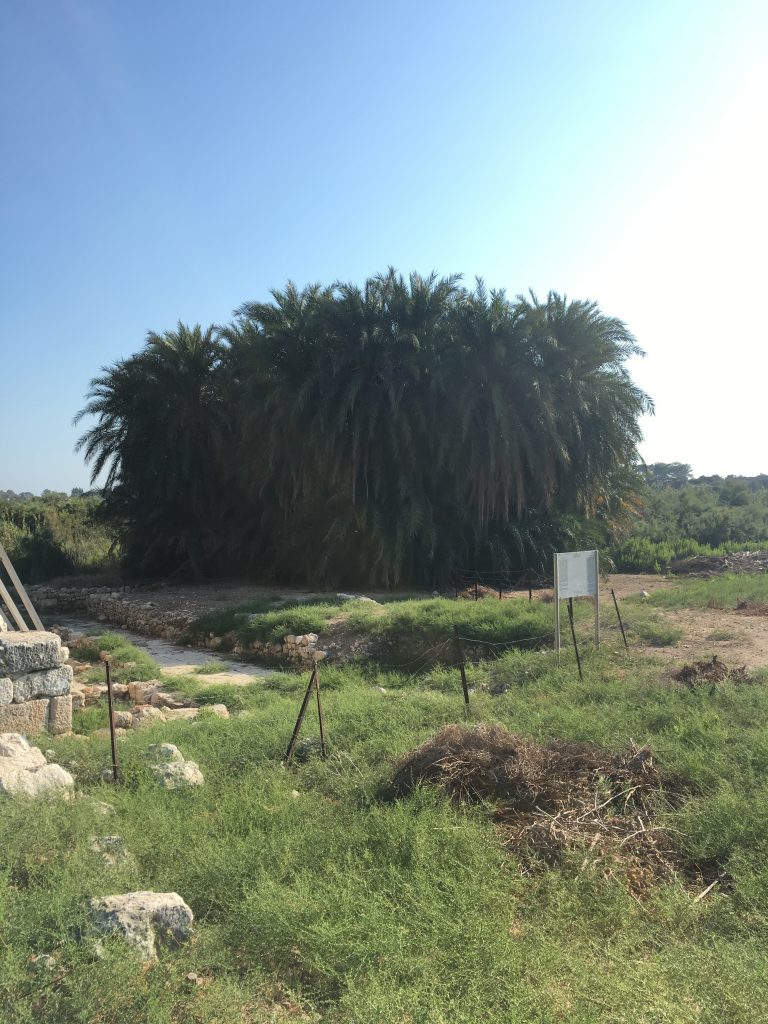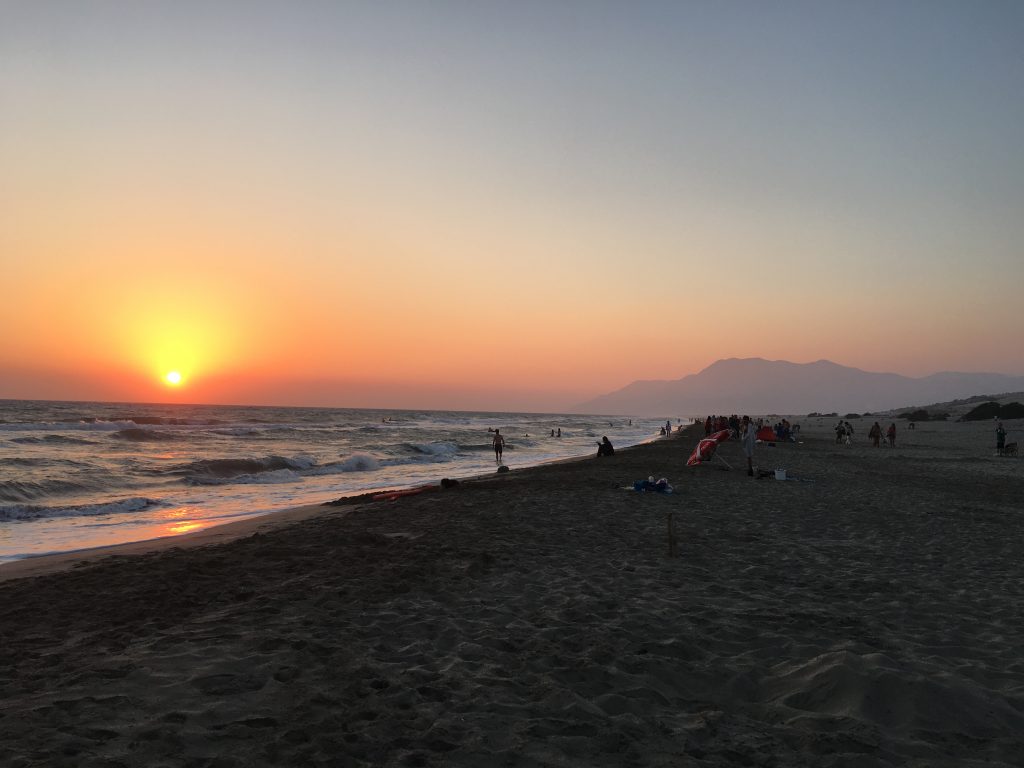When you hear of Patara Plajı, the 20 km stretch of sand just west of Kalkan, your first thoughts may be of swimming, suntanning, and turtles. However Patara was also the capital of the Lycian League and an important town for subsequent Roman and Byzantine empires. Instead of rushing immediately to the sea, take the 3 km walk from the town center to the beach at a leisurely pace and immerse yourself in the history.

Patara, capital of the Lycians
Patara was once the most important seaside town in the Lycian League, with many historians pointing to Patara as both the birthplace of Apollo and St. Nicholas. The democratic League also had their conferences in Patara, with a large, well-restored government building to prove it. In fact, the 18th century philosopher Montesquieu remarked that much could be learned from the League as the ”world’s first true democracy”.
While the Lycians were more interested in developing its trade, art, and culture rather than war, Patara did not lose its significance once the League was absorbed by a number of empires. Both the Romans and Byzantines used Patara as a trade port, naval base, and religious centre. The oracle at the Temple of Apollo, though still unrecovered, reportedly rivalled the Temple of Delphi. In Byzantine times, St. Paul did some missionary work after being shipwrecked near the town before heading to Jerusalem.

Temples, tombs, and palm tree groves
Walking provides the perfect opportunity to see these little-explored ruins up close. Along the rolling plains you will see temples, churches, tombs, pottery kilns, and the famous welcome gate. Further off is a luxurious three-room hamam and a grove of palm trees, the potential birthplace of Apollo by Leto. While the location is debatable, I chose to believe that the perfect circle of ancient palms could only be fit for a god. As the Turkish Ministry of Culture and Tourism puts it, ”there is no other ancient city where myths and reality so perfectly coincide with each other”.

Part of the main road that stretches from the hamam is still under ground, with Akdeniz University leading the excavations. What has been uncovered shows beautiful columns and shops with fragments of mosaic and paintings. Finally, at the stretch closest to the beach, is the famous government building admired by Montesquieu. Next to the government building is a typical amphitheater with rock cut reliefs of gladiators ready to fight.
After spending an afternoon wandering around, you’ll reach the beach after passing by a parking lot and the museum shop. Here the beach is quite busy with a restaurant, chaise lounge chairs for rent, and turtle information tours. However, if you continue further west you’ll be alone with the waves, perfect to contemplate your trip.
Getting there and away
Transportation: There are frequent buses from Antalya, Kaş, and Kalkan to the turn of for Patara. From the highway you will have to wait for a minibus that takes you the 3 km to the town center. The town center has a small bus station with buses to the beach or directly to other cities. Getting a seat in one of the big buses going to Fethiye is a bit harder. Be prepared for a long wait or perhaps make some friends and rent a taxi as a group!

Patara is also close to other main Lycian historical sites, such as Letoon and Xanthos. Due to its proximity to Saklıkent canyon, it is a perfect site for history buffs and nature lovers.
Accommodation: Patara has no shortage of places to stay, from cozy pensions to more luxurious hotels. Just remember to book in advance during the busy summer season!
All photos are courtesy of the author.









